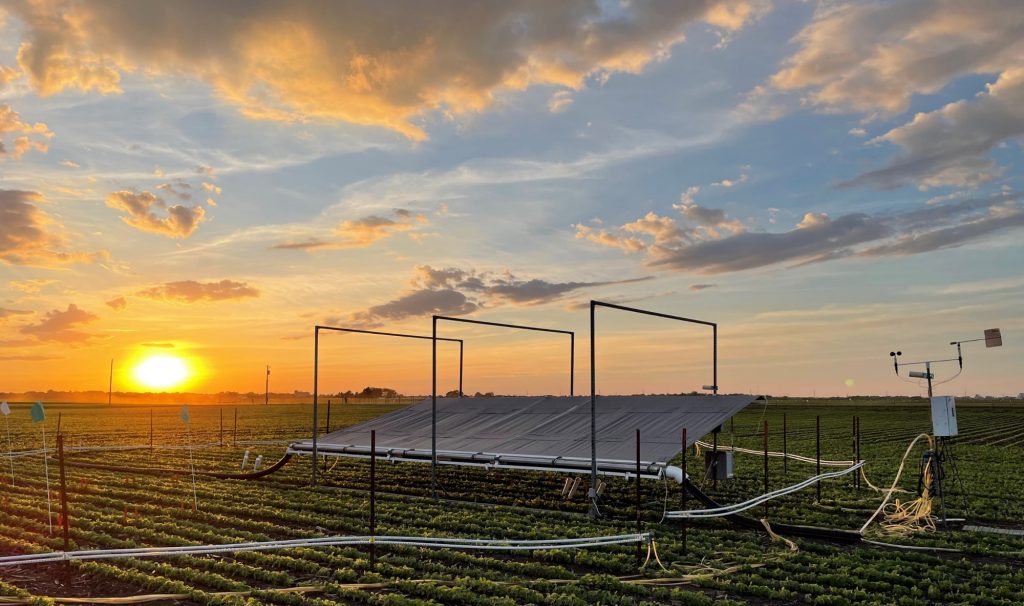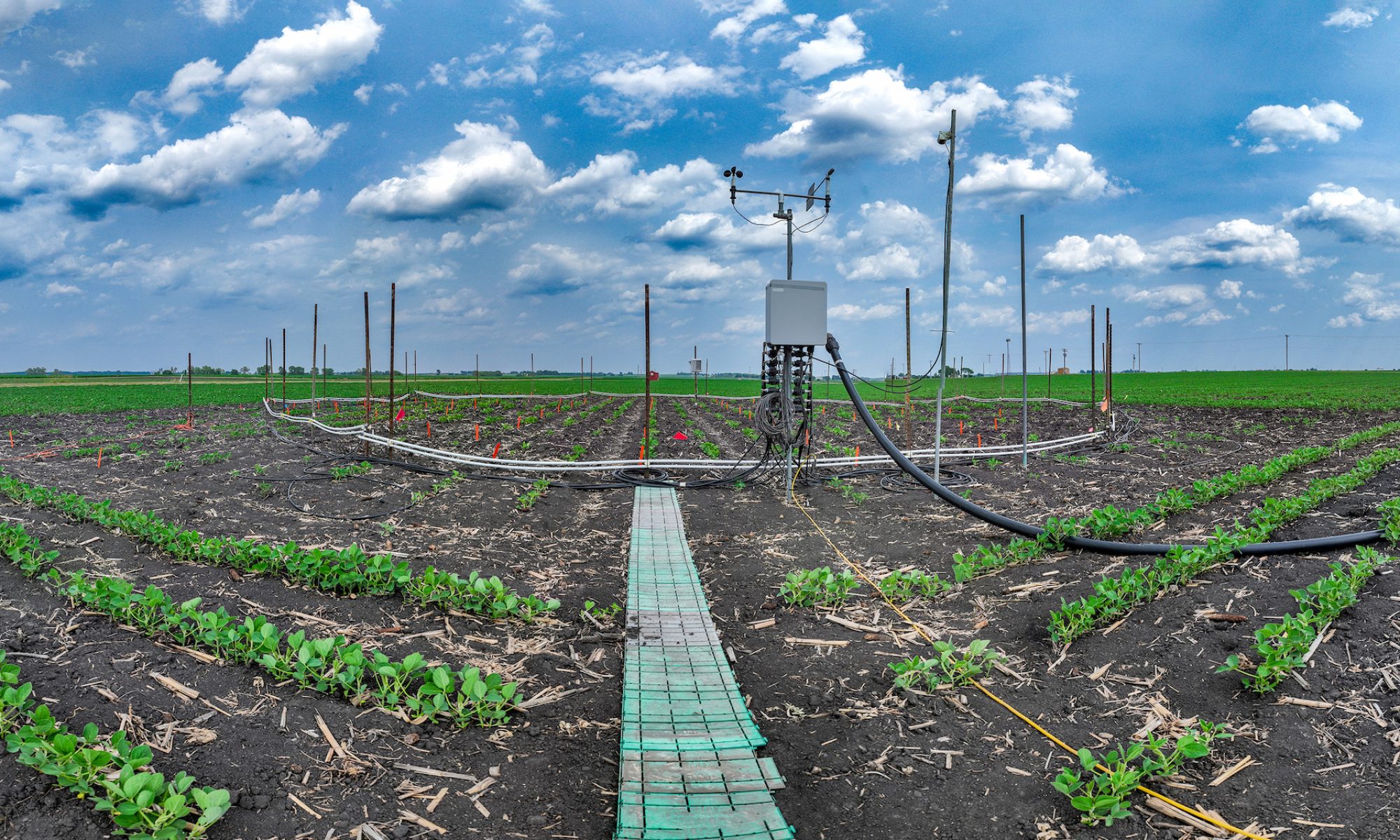SoyFACE, situated on 32 hectares of Illinois farmland, is home to a range of experimental layouts designed to simulate future climatic conditions.
Jump to: FACE – T FACE – VPD FACE – Mini FACE – Rain-Out Shelter – Drought Awnings
FACE (Free-Air Concentration Enrichment)
Our FACE rings are placed directly into traditionally managed cropping systems, providing a ‘real-world’ approach to understanding crop responses to future atmospheric conditions. The rings release CO2 or O3 over the canopy, with flow rates monitored and adjusted to account for changing wind speed and direction. See the Methods section of Aspray et al. (2023) for a thorough description of the FACE design and fumigation system.
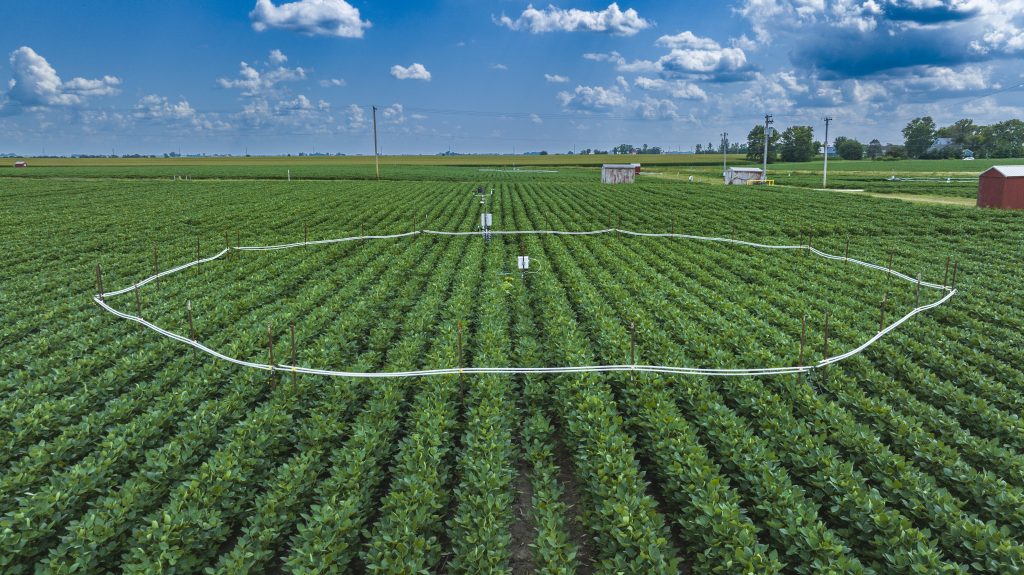
T-FACE (Temperature Free-Air Controlled Enhancement)
With global warming bringing greater average temperatures and a higher frequency of acute heat waves, it is vital to understand how crops respond to increased temperatures. The T-FACE system allows researchers to do so in an open-air field setting, with each T-FACE heating array made up of six infrared heaters arranged hexagonally and positioned above the crop canopy. Each heating array is regulated by a datalogger to maintain a preset, constant temperature. For more detailed information on the T-FACE system used at our site, see the Materials & Methods section of Ruiz-Vera et al. (2013).
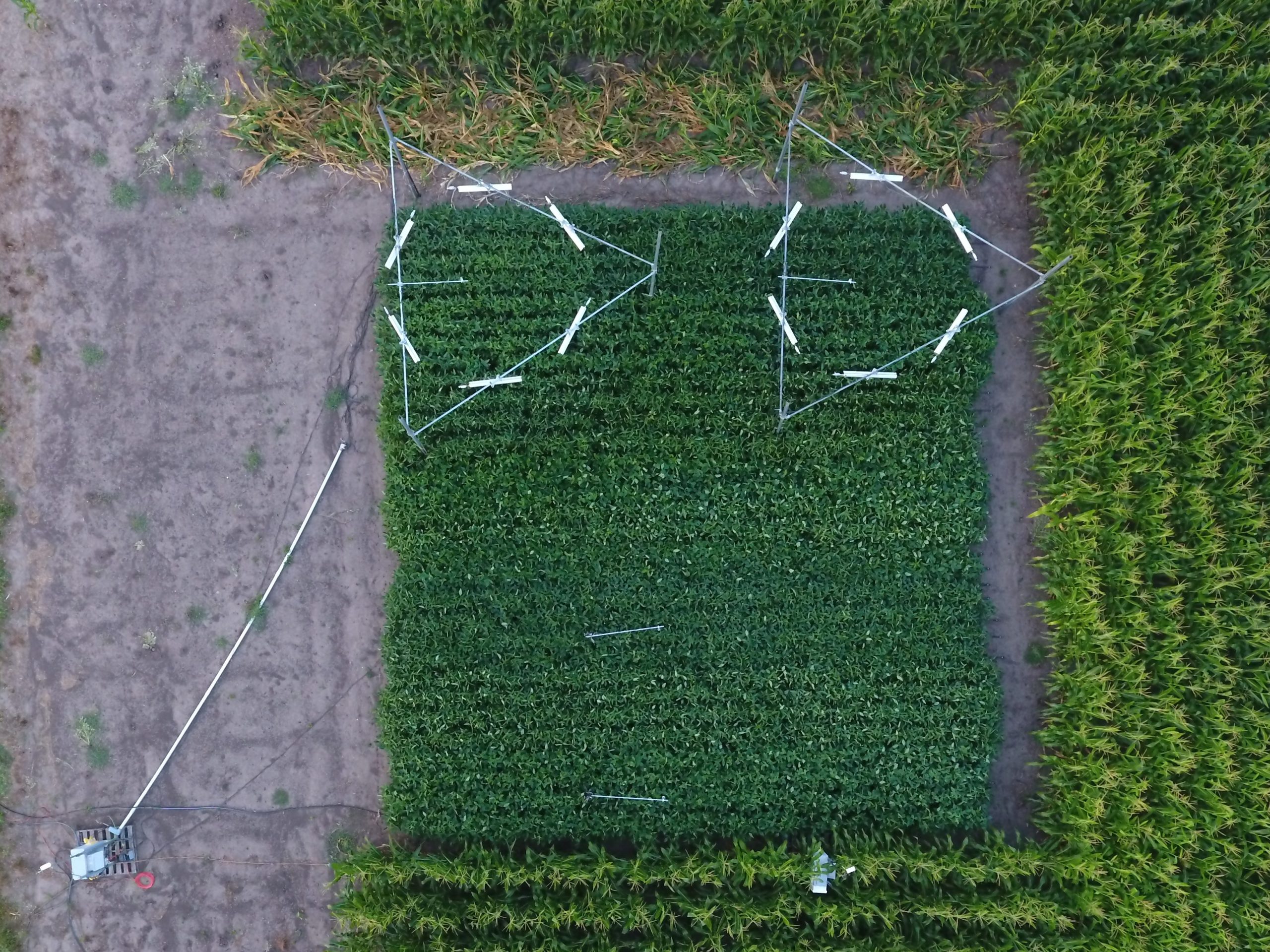
VPD-FACE
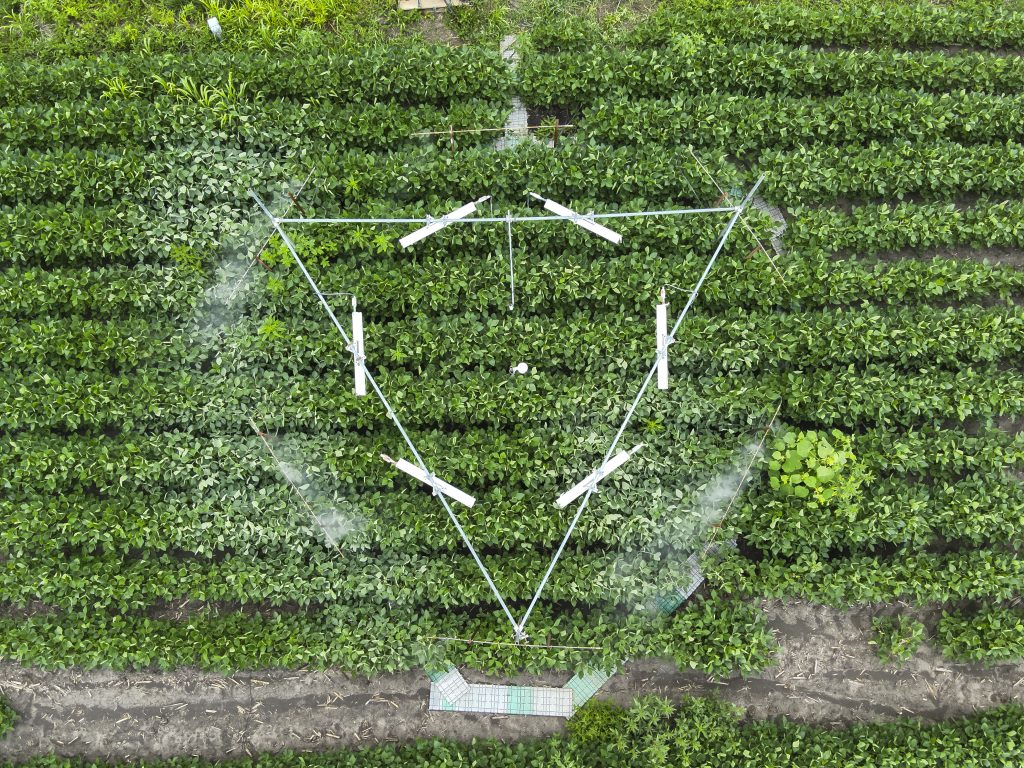
Mini-FACE
Our Mini-FACE rings function in the same manner as standard FACE rings, except at a reduced scale, making Mini-FACE more suited to smaller-scale experiments.
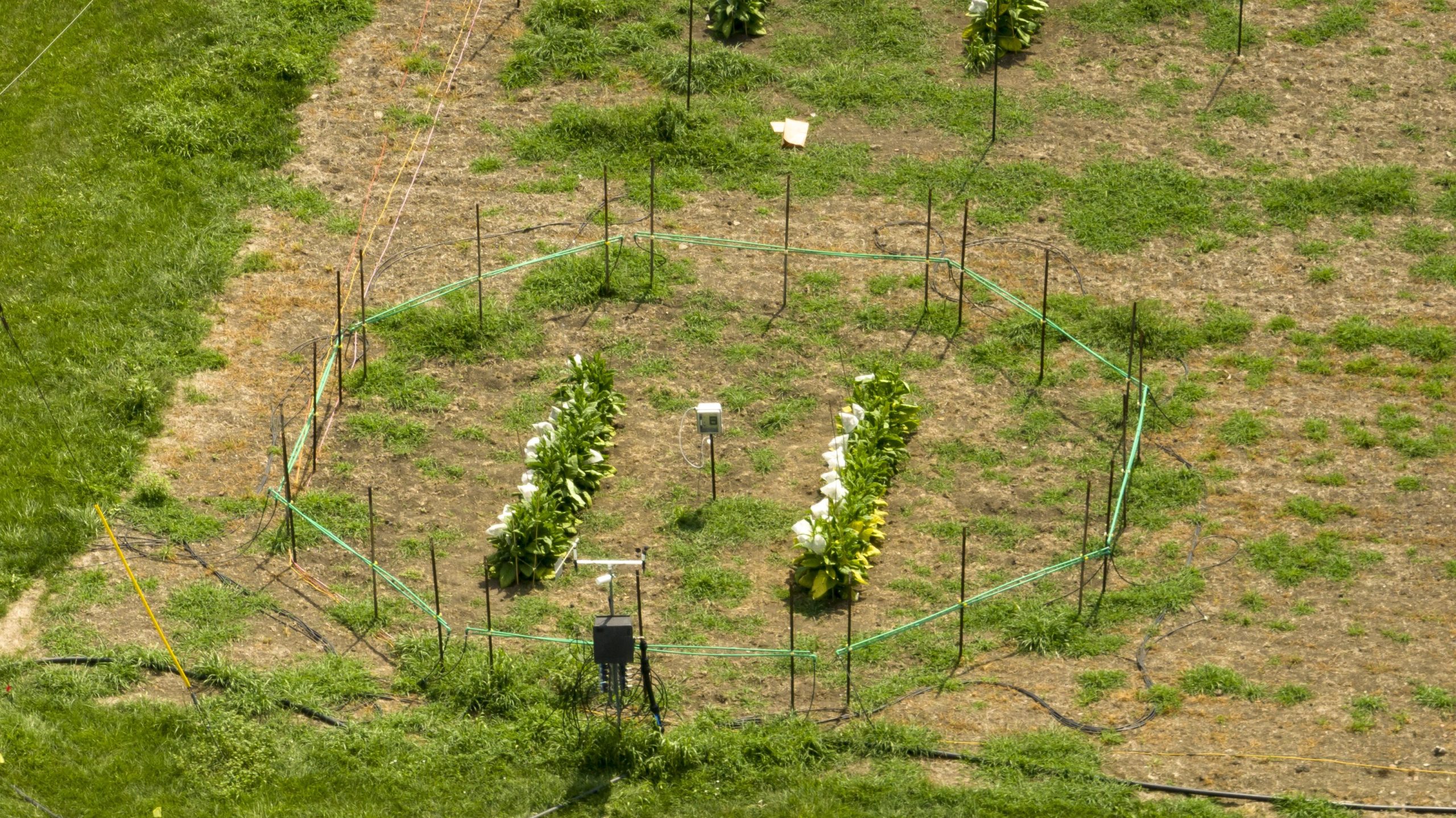
Rain-Out Shelter
Our rain-out shelter is equipped with retractable roof and walls that automatically deploy within two minutes of a detected rainfall event. Once there has been 10 minutes of no detected rain, the control system reopens the roof and walls. To prevent water from entering laterally from outside soils, a plastic barrier has also been buried to a depth of 1.2 meters around the perimeter of the rain-out shelter. Irrigation can then be added for custom water-limitation experiments.
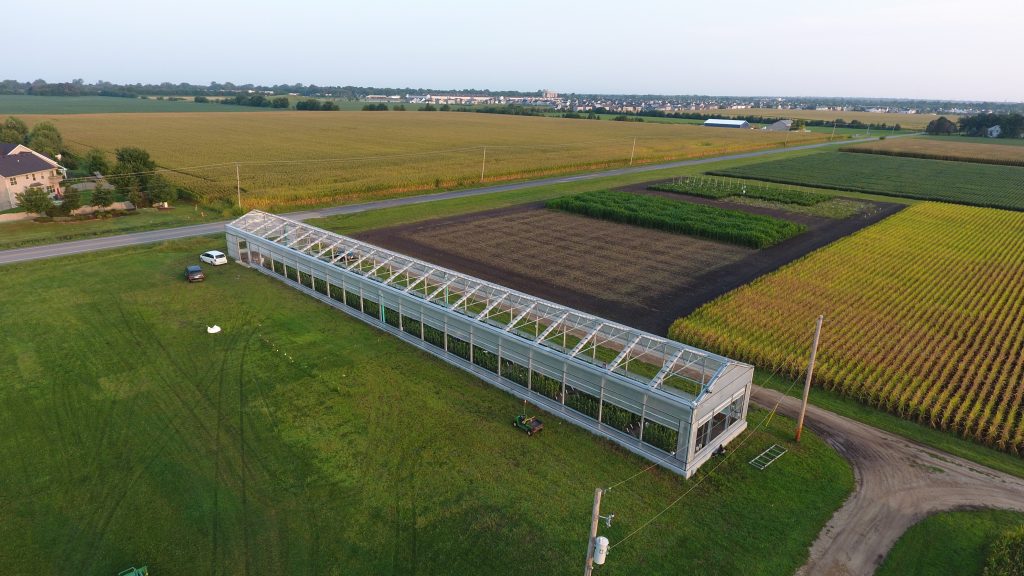
Drought Awnings
Drought awnings are much smaller but function similarly to the rain-out shelter, with automatic, retractable covers that intercept rainfall. Intercepted precipitation enters drain pipes and is routed and released outside of the treatment area. The smaller size of the awnings allows them to be easily combined with other treatments, such as the FACE rings.
